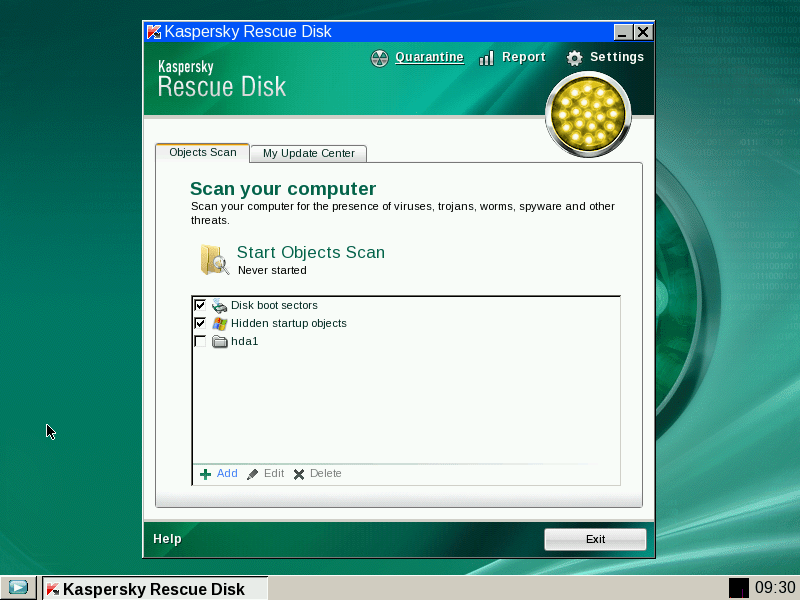

- #KASPERSKY RESCUE DISK DOES NOT SEE WIFI INSTALL#
- #KASPERSKY RESCUE DISK DOES NOT SEE WIFI UPDATE#
- #KASPERSKY RESCUE DISK DOES NOT SEE WIFI SOFTWARE#
- #KASPERSKY RESCUE DISK DOES NOT SEE WIFI WINDOWS#
#KASPERSKY RESCUE DISK DOES NOT SEE WIFI WINDOWS#
#KASPERSKY RESCUE DISK DOES NOT SEE WIFI INSTALL#
To do so, install Kaspersky VPN Secure Connection on your device and enable a secure connection each time you connect to the Internet. Secure your connection by using a VPN, which adds another level of encryption.For more information, see this post on the Kaspersky Lab blog. Check that a green or gray padlock icon is displayed in your browser’s address bar. This protection component scans network traffic and protects the computer against network attacks.įirewall is included in the following Kaspersky Lab applications: Kaspersky Internet Security, Kaspersky Anti‑Virus, Kaspersky Total Security, Kaspersky Security Cloud and Kaspersky Small Office Security. Make sure that you have installed and enabled Firewall.When connecting to a Wi-Fi network, you should always follow these recommendations: Home wireless networks are also at risk, as even the the highest level of protection for wireless networks (WPA2 encryption) can be hacked using the KRACK method of key reinstallation. Your email addresses may be used for sending spam and the contents of your social network page may be changed. This means that your logins, passwords, messages, and other sensitive information can be accessed by malefactors. Yet I would like to tell you about one more, less typical, method of using this tool.When you connect to a public Wi-Fi network (for example, in a cafe), your data is transferred unencrypted.

There are standard ways to use an Emergency Restoration Disk against viruses. This will help you to avoid situations where you have to perform a lot of extra actions to solve problems that could have been prevented.
#KASPERSKY RESCUE DISK DOES NOT SEE WIFI UPDATE#
Remember this simple truth: use the most up-to-date version of the antivirus program and do not forget to update any applications running on your computer. Additionally, Kaspersky Internet Security now offers a capability that can prevent such blockers from infiltrating your system: The Rescue Disk cures 100% of cases, as the virus is written in the same threads of the register responsible for launching the operating system. It is included in the Emergency Disk Restoration bundle and is easily run by executing a simple command in a regular Linux-based terminal.ĭon’t believe the culprit and do not get lured into doing anything stupid. In order to use a quick cure for restoring your system, Kaspersky Lab developed a special utility called Windows Unlocker. Assume our product is not installed but a blocker is already there. If you hope to delete a blocker virus, you may need to do some additional work. If you have to cope with a malware infection, the first thing you should do is update your databases to arm yourself with the latest antivirus signatures, and then check the hard drive for viruses.
#KASPERSKY RESCUE DISK DOES NOT SEE WIFI SOFTWARE#
Removing malicious software with Rescue Disk #trojan #virus #malware /ZPdfIV98OC All you need to do is get a flash drive and follow our instructions. Therefore, no blocker banner or malware is able to launch on the computer.Īnother piece of good news is that in order to create the Emergency Restoration Disk you do not need any special hardware or specific skills. The Kaspersky Rescue Disk is based on Linux OS, which effectively excludes the possibility of running viruses in such an environment. The #Kaspersky Rescue Disk helps reanimate an operating system in cases where your system is not doing well Tweet This wonderful product is also known as the “Emergency Restoration Disk”, which perfectly describes its ability to help in situations where it is extremely difficult to delete the malware. In this case, we have a solution: The Kaspersky Rescue Disk. Or, a case like this: having surfed the net, you downloaded not only a Flash player, but also a banner that blocks the system. However, there are some cases where we do not have to defend, but rather attack, the malware.įor example, imagine trying to install our antivirus to an already infected system, which was so damaged that the integrated antivirus module is not able to cope. As you may know, our products are used most frequently for defending against malware and cybercriminals, as the latter never cease to attempt to harm our customers’ systems.


 0 kommentar(er)
0 kommentar(er)
